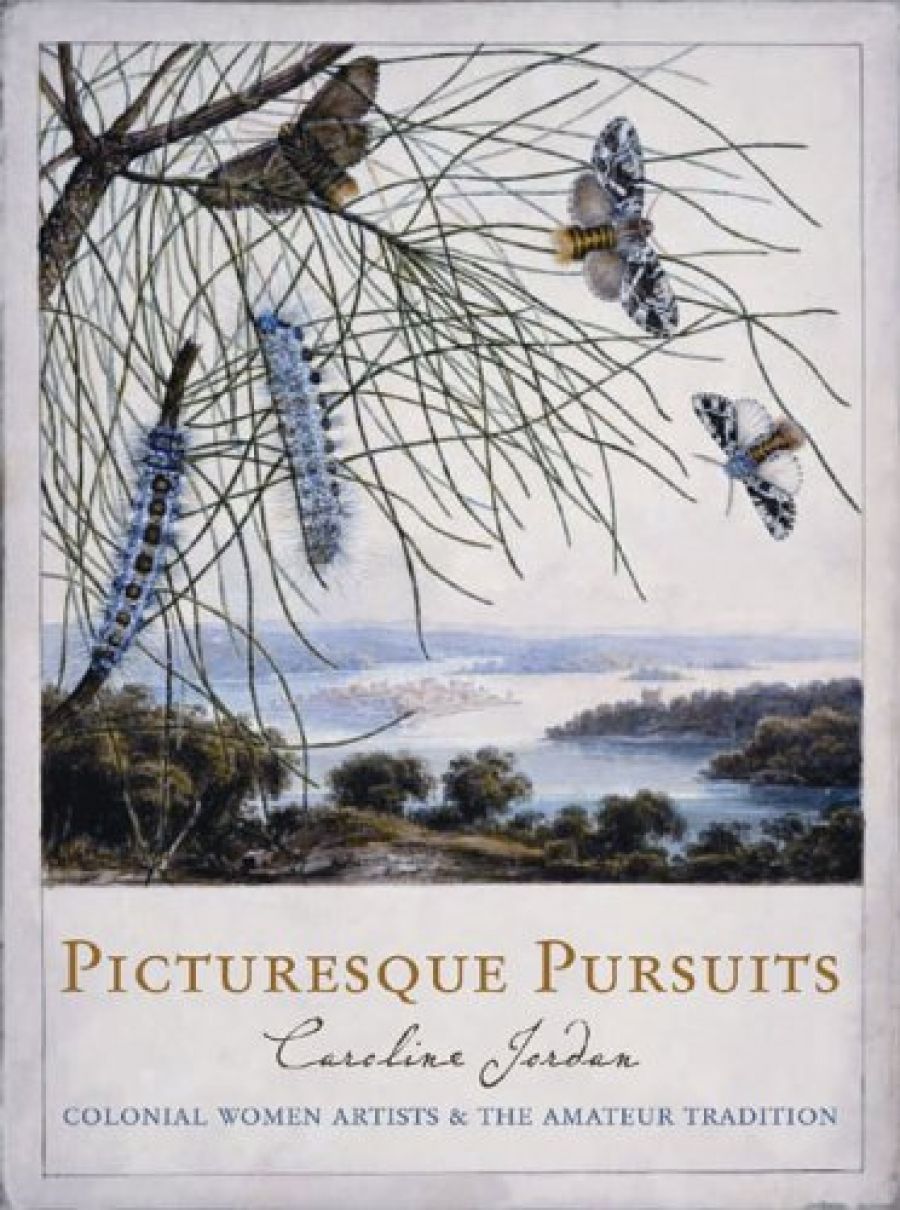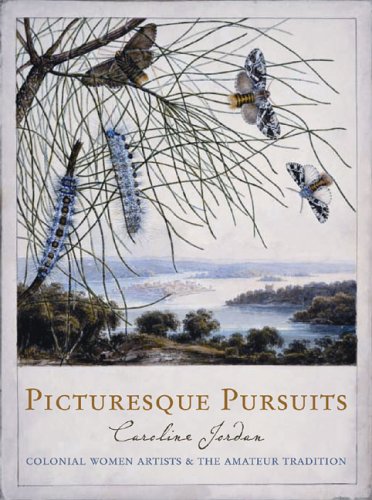
- Free Article: No
- Contents Category: Art
- Review Article: Yes
- Article Title: Captives in Eden
- Online Only: No
- Custom Highlight Text:
Picturesque Pursuits is a pioneering survey of a neglected area within Australian cultural history: the lives and works of colonial women artists. Caroline Jordan places her analysis of this subject within a broader social, political and historical frame. This approach allows her to reveal the multifaceted importance of an art tradition that was often interwoven with women’s daily domestic life. Evidently, colonial women’s art does not conform to traditional notions of a studio based ‘high art’, and its significance extends beyond the limited definitions of this category. As Jordan points out, most women artists produced works that were confined to the lower-value genres of miniatures, botanical studies, picturesque sketches and scrapbook collages. Their works were often small-scale mixed-media pieces of varying technical proficiency. The fact that the majority of colonial women’s art is found in libraries and archives rather than in the major galleries has further con- tributed to its virtual exclusion from the high-art canon.
- Book 1 Title: Picturesque Pursuits
- Book 1 Subtitle: Colonial women artists and the amateur tradition
- Book 1 Biblio: MUP, $49.95 hb, 224 pp
- Book 1 Cover Small (400 x 600):

- Book 1 Cover (800 x 1200):

Yet, in revealing the significance of colonial women’s art, Jordan’s account avoids the pitfalls of 1970s-style redemptive feminist analysis. She does not claim that all colonial women’s art was as professionally competent as that produced by men. As her first chapter (‘An Ornamental Education’) argues, this was an impossible expectation given the limited art training options available to women in the nineteenth century. They did not have access to life models. In many cases, they copied the paintings and studies that their masters provided. Nor does Jordan claim that the ‘amateur eye’ was an advantage giving women a ‘naïve’, innocent and therefore, by implication, ‘truthful’ view of the Australian landscape.
The importance of colonial women’s art depends upon a consideration of both its role within social networks and its historical value. Sophia Campbell’s Sydney barracks (1817), for example, gives us an unofficial glimpse of life that we would not be able to see otherwise. This remarkable scene of soldiers on parade includes a soldier chasing ducks and a woman putting washing out to dry upon the ground. Campbell’s equally remarkable St Phillips Church, Sydney (1816) shows people ‘at home’ within their environment. The point might also be made that the lack of communication between the soldier, convict, sentry and servant in this image reveals how social hierarchies were maintained within the tiny penal colony. Ladies and convicts existed in close proximity. Another striking image is Mary Morton Allport’s Our winter quarters (1832). This sketch of snow-covered wooden huts placed around a campfire shows the difficult conditions in which the artist (and mother of two-year-old Morton) produced her work. Other colonial women artists created their art in equally dire circumstances.
These works of art also reflect the diversity of women’s experiences in Australia. Martha Berkley’s experience of isolation in the newly founded colony of Western Australia dramatically contrasted with Louisa Ann Meredith’s involvement with the embryonic public art scene of Hobart. These conditions helped to determine not only the subject matter of the artworks produced by these artists but also the role that the work played within the broader community.
A minor criticism is that Picturesque Pursuits seems to underestimate the radical shift that took place in the move from English to Australian subject matter within the art of colonial women artists. In addition to her botanical illustrations, Louisa Ann Meredith’s innovative poems were the first to respond to a specifically Tasmanian environment rather than an English one. Nor does Jordan’s presentation of women as captives in the ‘Eden’ of their gardens fully acknowledge the positive, redemptive nature of this image. As custodians of the garden, women helped to create a ‘paradise’ that allowed themselves and those around them to come to terms with an unfamiliar environment.
Nevertheless, this extensively researched, insightful and engaging account reveals a significant ‘lost history’ and provides an effective methodological approach for future researchers of colonial women’s art. Jordan’s survey raises intriguing questions for more detailed study. To what extent did the botanical drawings produced by women contribute to scientific research? What insights does colonial women’s art give in terms of understanding the social and political relations between indigenous and settler communities? Finally, what museological strategies can be employed to allow these artists to be collected and displayed within our national art galleries? The exceptionally beautiful cover, featuring a painting by the artist Harriet Scott, and the remarkable illustrations further add to the value of this remarkable book.


Comments powered by CComment